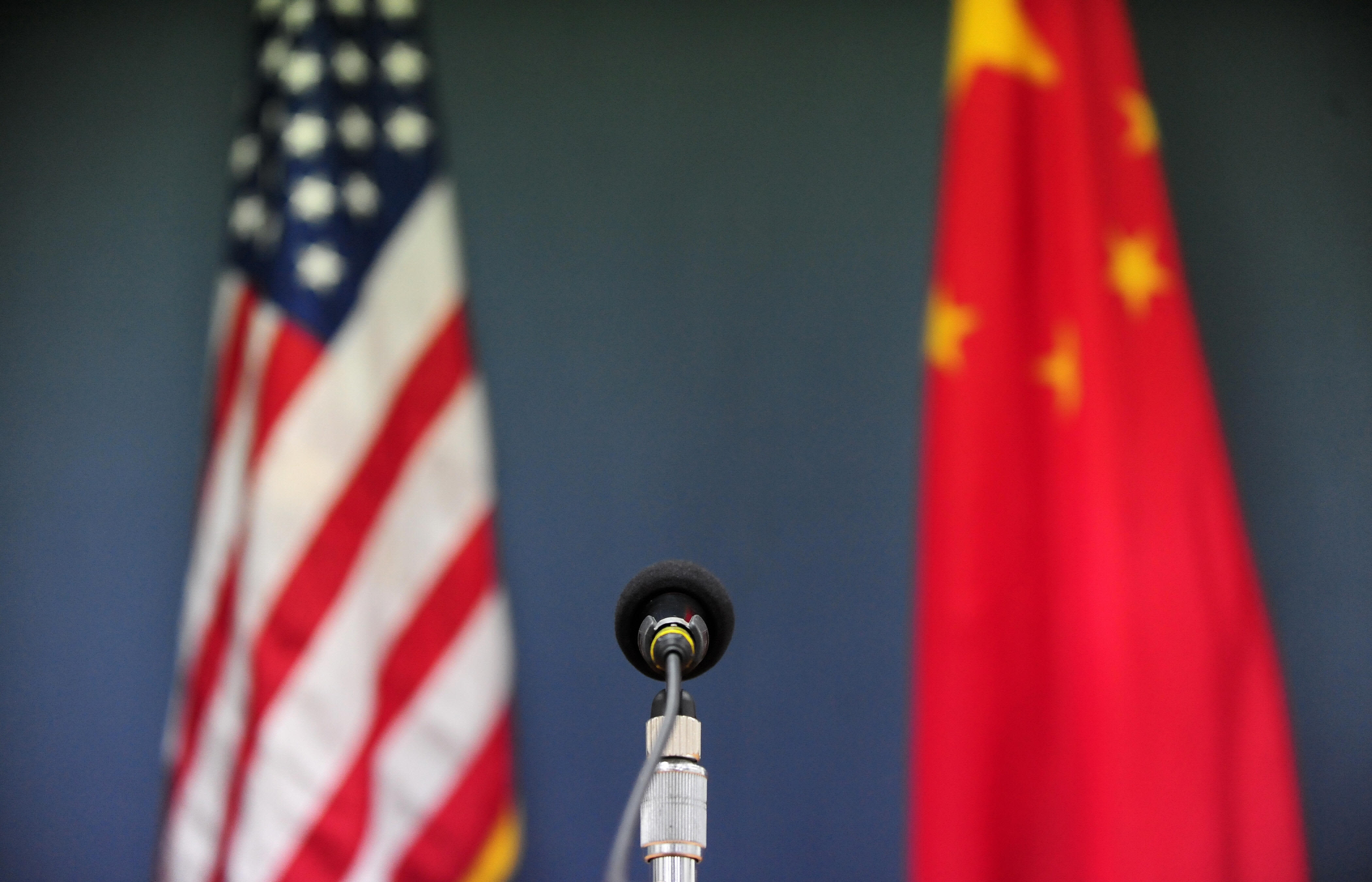
The U.S. and China flags stand behind a microphone awaiting the arrival of then-U.S. Senator John McCain for a press conference at the U.S. Embassy in Beijing on April 9, 2009.
Frederic J. Brown | AFP | Getty Images
BEIJING — Another high-level meeting between U.S. and Chinese officials — this time in the Chinese city of Tianjin, just outside of Beijing — began with criticism.
Chinese Vice Foreign Minister Xie Feng said during talks Monday with U.S. Deputy Secretary of State Wendy Sherman that the two countries’ relationship “is now in a stalemate and faces serious difficulties,” according to an English-language press release from China’s Ministry of Foreign Affairs.
“Fundamentally, it is because some Americans portray China as an ‘imagined enemy,'” the release said, adding, “We urge the United States to change its highly misguided mindset and dangerous policy.”
The statement said, however, China still wanted to work with the U.S., on the condition leaders “change course” and adhere to Chinese interests.
The U.S. Embassy in Beijing did not immediately have a comment when contacted by CNBC.
Tensions between the U.S. and China have escalated in the last several years. Former U.S. President Donald Trump used tariffs and sanctions in an attempt to address longstanding criticism against China, such as unequal market access, lack of intellectual property protection and forcing businesses to transfer technology in order to operate in the country.
Sherman is in China for a meeting with her counterparts there Sunday and Monday.
The goal of the meeting was not a negotiation, but an effort to keep high-level communication channels open, senior State Department officials said in a briefing with reporters over the weekend.
The U.S. officials expected to meet with Xie first, and then Chinese Foreign Minister Wang Yi second.
The leaders are expected to work toward the first meeting of Chinese President Xi Jinping and U.S. President Joe Biden, likely around the G-20 summit in October.
State Department spokesman Ned Price said at a briefing Wednesday that Sherman would travel to China “from a position of strength,” similar to Secretary of State Antony Blinken’s meeting with his Chinese counterparts in Anchorage, Alaska.
That gathering in March, the first high-level meeting between the two countries under Biden’s administration kicked off with an exchange of insults.
In subsequent months, China’s Vice Premier Liu He, who led trade negotiations during the Trump administration, held phone calls with U.S. Treasury Secretary Janet Yellen and U.S. Trade Representative Katherine Tai. These economy-focused conversations were more amicable, according to official readouts.
Tough U.S. stance on China
Biden has not only maintained his predecessor Trump’s tough position on China, but has criticized Beijing over alleged human rights abuses and is working more with U.S. allies in putting pressure on China overall.
U.S. Defense Secretary Lloyd Austin is also set to travel to Singapore, Vietnam and the Philippines, while Blinken will visit India.
Both the U.S. and China “have a lot at stake” in working toward a meeting between Biden and Xi, and will try to show the relationship “is not going completely off the rail” while appearing strong, Michael Hirson, practice head for China and Northeast Asia at Eurasia Group, said Monday on CNBC’s “Squawk Box Asia.”
He said Biden has been able to convince major G-7 countries to make strong statements against China, but has “not yet articulated a trade strategy or another approach that would really be effective in countering China’s economic strength.”
— CNBC’s Yen Nee Lee contributed to this report.
Source: CNBC
